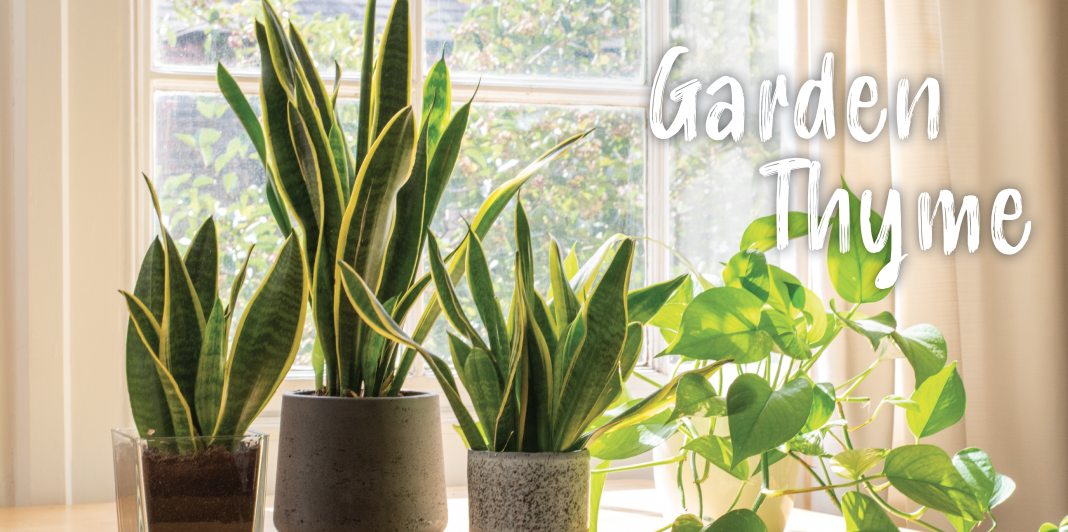Indoor house plants can help make your house feel more like a home. They add beauty, character, style, and comfort. And many find being a “plant parent” to be an extremely rewarding experience. However, some people might take to the care of plants more easily and naturally than others. And that’s okay! It’s a learning process with ups and downs. At some point though, you might find yourself with a beloved plant that, once lively and bright, now seems like it’s dead or dying. But don’t give up or throw it into the compost pile just yet! There are a few things you can do to revive a dying plant.
In fact, instead of feeling like a bad “plant parent” and beating yourself up for letting your plant get so sickly, use this as an opportunity to learn even more about your plant and its needs! Because to properly revive it you will have to figure out where you went wrong, assess the root cause of the problem, effectively address it, and develop even better plant care habits from now on.
So don’t fret! We’ve got you covered. Here are some things you can do to help revive a dying plant.
- Assess and address the cause
- Remove dead leaves and trim stems
- Repot your plant
- Fertilize with caution
- Give it time
1. Assess and address the cause
The first thing you need to do to revive a dying plant is to assess and address the cause of your plant’s ill health. Only by knowing the root cause (pun intended!) of what’s ailing your plant will you be able to effectively nurse it back to health. It will also show you where you need to correct your plant care routine to prevent this from happening again.
Is your plant still alive?
Well…is it? You can’t revive a dying plant if it’s already all the way dead. But what if it’s only mostly dead!? (Cue The Princess Bride reference!)
Your plant might look dead to you, but it might actually be showing signs of life if you know what to look for. First, check for any green on the plant. If your plant is still exhibiting green parts, there might still be life in there, and it’s worth trying to revive. Next, take a look at the roots. No matter what the top side of the plant looks like, the roots can tell you a lot about the actual health and viability of the plant. Healthy roots should look plump. They should be white to tan in color with white tips.
Once you’ve noticed signs of life, you can work to revive a dying plant.
Was it overwatered?
It’s not uncommon to overwater an indoor plant. This is especially true if you are new to caring for plants, or are used to caring for plants that require more water than other varieties. Luckily, it is generally easy to spot the signs and revive a dying plant from overwatering.
If a plant has been overwatered, its leaves will begin to wilt and turn a brown or yellow color and the soil will be moist. An overwatered environment could also cause the roots to begin to rot which could potentially kill the plant. If you find these signs of overwatering, simply remove the plant from direct sunlight and stop giving it water until the soil dries out.
Was it underwatered?
Underwatering a plant is also a very common plant care mishap. Maybe you left for a trip and forgot to arrange for someone to give your plant babies a little TLC while you were away. Or maybe you’re just not used to having to remember to water a plant regularly and simply forgot. Whatever the case, it is still usually possible to revive a dying plant suffering from dehydration.
There are a few telltale signs of underwatering. If a plant is dehydrated, it will begin to wilt. The leaves will start to dry out and turn brown at the edges. Then they will turn fully brown, die, and drop off the plant. The soil will also dry out and begin to crack and shrink away from the edges of the pot.
Obviously what your plant needs here is water. However, resist the urge to overcorrect and give the plant too much water all at once and risk flooding the plant. Give it some gentle sips until it’s fully hydrated again. Drain any excess water from the bottom so the roots don’t sit submerged in a pool of water and begin to rot.
Whether you’ve over or underwatered your plant, be sure to reaffirm the correct water requirements for that specific plant, learn from the way it’s responded to how you previously watered it, and adjust your care routine accordingly.
Are there signs of pests?
Another reason your plant is suffering could be an infestation of bugs or pests. You might actually see the bugs, such as mealybugs or whiteflies. Or, you might just see evidence of tinier bugs such as scale insects leaving tiny bumps on the leaves, or spider mites leaving webs.
In any case, try to revive a dying plant by knocking off the bugs by gently putting the leaves under a stream of water in your sink or shower. You might also then try dabbing and gently rubbing the leaves with a cotton ball soaked in alcohol, and then rinsing them off after. Afterward, if they persist, try a natural pest control product such as neem oil or an insecticidal soap.
Does it have the right lighting?
Another major factor that contributes to the health of your plant is light, and each variety of plant has its own optimum amount. And if it doesn’t get this preferred amount, that will be evident in curling, shriveling leaves. Your plant might need full sun, partial sun, direct sunlight, or indirect sunlight. Once you reaffirm which lighting is best for your plant, you can sometimes revive a dying plant simply by adjusting its location in your home accordingly.
How is the humidity level for your plant?
If you are pretty positive you are giving your plant the right amount of water but it is still showing leaves that are wilting, drying, and browning, it might be due to the humidity level in your home. Apart from the proper amount of water from the roots, a plant also responds to the amount of moisture in the air on its leaves. Tropical plants are particularly sensitive to this factor.
If you need to revive a dying plant that’s showing signs of drying out due to aridity in the air, use a spray bottle and gently mist the leaves to directly increase the humidity. You might also try grouping your plants together to create a self-humidifying environment between them. Also, pay attention to where your plant is positioned. If it’s located near a heater or air vent, that could be drying out the plant and you need to relocate it.
2. Remove dead leaves and trim stems
Once you’ve assessed and addressed the core issue(s) causing unhealthiness, you can also help revive a dying plant by making way for new life. A shriveled, brown leaf is a dead leaf and should be trimmed off. However, if it is only the edge or tip of the leaf that is shriveled and brown, you can just snip off the affected part.
After you trim off the dead leaves, you need to trim back the dead parts of the stems, too. Trim them back to the point where it is showing healthy and green again and make your snip there.
3. Repot your plant
Sometimes a plant just needs a fresh start in a new environment to be healthy, just like you! So to help revive a dying plant, you might want to go ahead and repot your plant with fresh, new soil entirely. To do this, shake the dirt off of the roots, and trim any bits that look dead or slimy. Then repot the plant using fresh potting soil into a clean container with drainage holes. Use a container that’s about 2 inches bigger than its previous one so your plant has more room to grow. Watch this quick video tutorial that takes you through the steps of repotting a plant.
4. Fertilize with caution
Feeding your plant can be helpful, especially in its peak growing season. A plant that looks weak and discolored might be malnourished and would benefit from some compost or fertilizer. However, if you need to revive a dying plant that’s in particularly bad shape, go slow. The plant is already in a state of stress in its condition, and doing too much or giving it too much all at once could put it into shock leading to other problems.
Over time your plant’s health will be restored and you can keep up all of these good habits. And most plants do appreciate a little fertilizer once or twice a month during their growing season.
5. Give it time
Lastly, be patient and give it time. Depending on the damage and the cause of the ailment, your plant might perk up overnight or it might take a month to revive a dying plant. So make your adjustments, be patient and keep an eye on your plant, and then continue with your improved plant care habits so your plant will be there to keep you company and cheer up your home for years to come.
Like this content and want more? Read more home and garden tips on our blog! And don’t forget to subscribe to Dock Line Magazine to get more content like this sent straight to your inbox and mailbox!






















[…] (usually tropical varieties) need a certain amount of humidity in the environment to keep from wilting and dying. Therefore, if you have a lot of houseplants grouped together near a window or wall and have […]